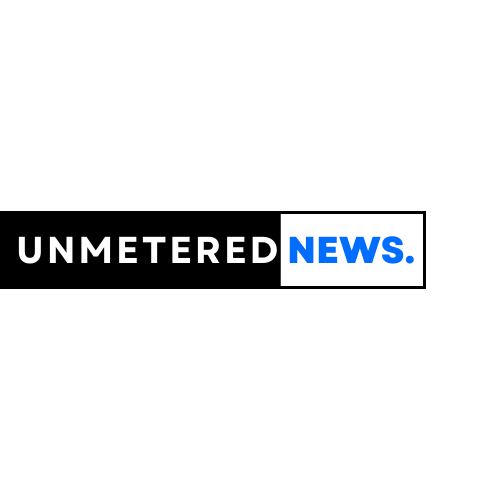- Home
- Advertise With us
- World News
- Tech
- Entertainment
- Travels & Tours
- Contact US
- About us
- Privacy Policy
Top Insights
What Would It Take to End the Regime in Iran?


CIPHER BRIEF REPORTING – As U.S. President Donald Trump demands Iran’s “unconditional surrender” and hints that Iran’s Supreme Leader could also be targeted amid Israel’s Operation Rising Lion, experts are reconsidering the complicated equation of regime change.
Supreme Leader Ayatollah Ali Khamenei on Wednesday, rejected President Trump’s demand, saying, “Intelligent people who know Iran, the Iranian nation, and its history will never speak to this nation in threatening language because the Iranian nation will not surrender” and warned that Tehran would retaliate against U.S. involvement in Israel’s ongoing military operation.
Israel’s bombing campaign has sharply escalated an internal shadow conflict that has simmered for decades. While Israeli Foreign Minister Gideon Sa’ar has insisted that Israel’s official goal is not regime change in Tehran, at least not yet, Prime Minister Benjamin Netanyahu seems to be encouraging internal uprising, hinting at the broader strategic stakes of the conflict.
“The time has come for the Iranian people to unite around its flag and its historic legacy by standing up for your freedom from the evil and oppressive regime,” he said over the weekend.
Inside Iran, the reaction is divisive and complex as evident at the defiant public rallies but history shows that waves of dissent in Iran have both surged and faded, often crushed by brutal crackdowns.
“There would need to be a perfect storm for the Islamic Republic to be toppled,” Reza Khanzadeh, Senior Foreign Policy Advisor to the U.S.-Iran Chamber of Commerce, tells The Cipher Brief. “A combination of severe weakening across all power structures within the regime, at least a 50 percent level of defection from military members of the IRGC and Basij, a national mass uprising in the hundreds of thousands – if not millions – that is perpetually self-sustaining with protesters willing to die for change.” And critical, he says, is the need for a strong opposition leader to guide the movement.
A History of Crushed Revolts
Over the last two decades, anti-government protests including the Green Movement of 2009 – which sent thousands of Iranians into the streets to protest the results of the presidential election – and widespread demonstrations in late 2017 and 2019 in response to a significant spike in fuel prices, raised the specter of vulnerability for the regime. The uprisings were met with violent suppression and limited international support. Experts point to the regime’s unbroken chain of command and loyal security forces as key reasons.
“The main reason for this failure is that the means of repression have not cracked in Iran. They have stayed steadfastly supportive of the regime,” Karl Kaltenthaler, Professor of Political Science at the University of Akron, tells The Cipher Brief. “The Shah fell because his forces for controlling the populace started to splinter. That is not happening with the clerical regime,” said Kaltenthaler, who warns about the complicated nature of regime change. “There is no question that the regime is unpopular with many, if not most, of its citizens. But that is not enough to topple the regime.”
He attributes much of this repressive strength to the “very powerful and large security apparatus in place in Iran built around the Islamic Revolutionary Guard Corps (IRGC) that is very intent on preserving the regime.”
So, what, if anything, do analysts believe could finally crack the regime’s grip?
“Iran’s regime, a steel vault of clerical control, requires choking its oil revenue and banking access through merciless sanctions to ignite internal collapse. Since 1979, it’s dodged crises with cunning, so only an economic stranglehold and a youth-fueled revolt too fierce to quell can break its grip,” said Thomas. “Reform is a fantasy while the IRGC stands firm; overthrow demands splitting their ranks or crippling their command.”
Others point to the decisive role public messaging needs to play. “When the revolutionaries took over in 1979, one of their first major moves was to seize the state broadcasting station. They were able to declare the revolution a success and call people into the streets,” Janatan Sayeh, a research analyst at the Foundation for Defense of Democracies, tells The Cipher Brief. “Now, in contrast, we’ve just seen Israel bomb Iranian broadcasting infrastructure. A more coordinated effort would’ve been to message directly to Iranians. Israel has the capability—just like it’s done in Gaza and Lebanon—to deliver targeted messaging, even to specific neighborhoods.”
From his purview, the Israelis could’ve said, “We support your fight for freedom. We’ll provide air support if you plan to mobilize against a specific civic institution—not necessarily a military one. We’ll pause airstrikes from this hour to that hour.” That would’ve made more sense.”
In what appeared to be a soft-power pivot, the U.S. State Department recalled dozens of staffers to revive Voice of America’s Farsi-language broadcasts over the weekend.
Sayeh suggested that a more “strategic target” for Israel “would have been the judiciary—specifically, those who execute protesters or special police units that suppress dissent.” He also pointed to the incoherent messaging of leaving rather than standing against the oppression.
“Right now, they (Washington) are telling Iranians to evacuate Tehran while simultaneously bombing,” Sayeh said. “How can you expect people to overthrow a regime under those conditions?”
Amid increasing public pressure from President Trump and threats of retaliation by the Supreme Leader, Reza Khanzadeh warns that U.S. involvement should be restrained.
“For hopes of a positive relationship between Washington and Tehran, the United States should not play an active role in influencing Iran’s political future unless there is that perfect storm for the Islamic Republic to end,” Khanzadeh noted. “And even then, Washington’s involvement must be light-handed.”
Some analysts do see fragments in Tehran’s repressive rule. Inflation, sanctions, and isolation have contributed to the country’s economic hardships. As Israeli strikes have intensified in both scale and sophistication, they have put unprecedented pressure on Iran’s nuclear infrastructure at the same time that the country’s younger population is more connected to global ideas and less tolerant of repression.
“There’s a point of no return in geopolitics. If the regime survives this, it’s going to come out more hostile. Any new agreement with (Tehran) would just delay the inevitable,” Sayeh insists. “If this escalates further and Washington gets pulled into a war by Tehran’s retaliation, that could be a death sentence for the regime. But if it doesn’t escalate—and Iranians are left with a broken country and the same regime—then the sense of betrayal and hopelessness will deepen.”
Others predict that the entrenched power structures and the leadership’s historical survival instincts remain formidable obstacles. While Israeli Prime Minister Netanyahu has said that regime change “could be a result” of continued attacks, experts emphasize that the leadership’s ideological resilience, combined with sophisticated control of its internal security and intelligence apparatus, makes a sudden crumble unlikely.
As Kaltenthaler observes, “Even if Khamenei, the Supreme Leader, were killed, it would not lead to regime collapse” in large part because “there is no organized opposition strong enough inside of Iran to topple the IRGC-clerical regime.”
Khanzadeh concurred that “the unfortunate reality is, even with economic hardships and youth opposition increasing, the likelihood of there being a correlation to a sustained opposition or regime change is very low.”
“Iran’s brain drain is one of the highest in the world. Most individuals inside Iran would rather leave the country than stay and fight,” he said. “They are jaded by their previous failed attempts, frustrated by the older generations, who they partly blame for the uninhabitable conditions they are in, and unwilling to die for change.”
Khanzadeh also says that while “Iran has a lot of highly intelligent, politically savvy, socially conscious, and charismatic individuals who could rise up and become this leader,” most are “dead, or in prison and withering away, or they are not publicly stating their intent to avoid imprisonment or death, or they have left the country.”
Even so, the challenges associated with regime change don’t seem to have much of an impact on the streets.
“Everyone is talking about regime change; everything is ready to go,” one twenty-something musician in Tehran tells The Cipher Brief. “This is the best situation for years. I am very optimistic.”
Are you Subscribed to The Cipher Brief’s Digital Channel on YouTube? There is no better place to get clear perspectives from deeply experienced national security experts.
Read more expert-driven national security insights, perspective and analysis in The Cipher Brief because National Security is Everyone’s Business.
Related Articles
Live Updates: Trump Says He Hasn’t Made Up His Mind on Iran Strikes
In a day of cryptic hints, President Trump offered no timetable for...
Thursday Briefing: Trump’s Indecision on Iran
Plus, Studio Ghibliesque video games.








Leave a comment